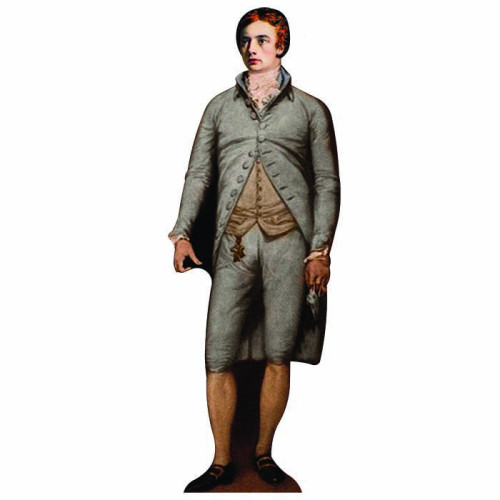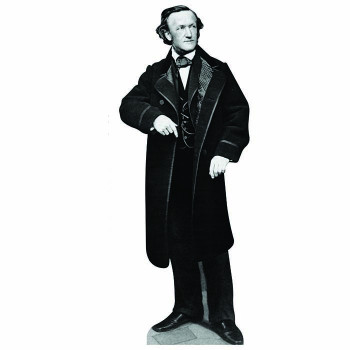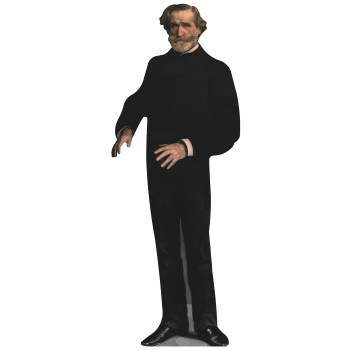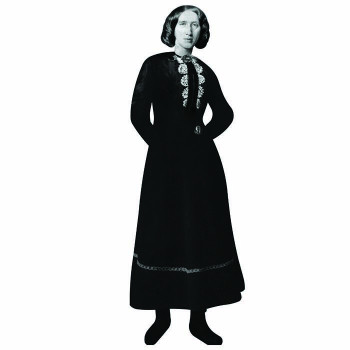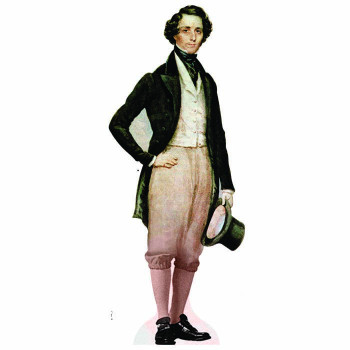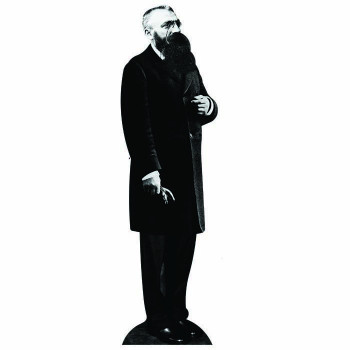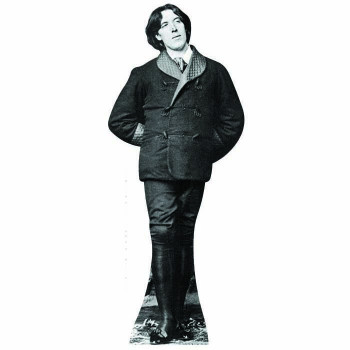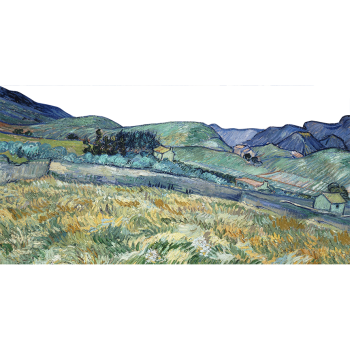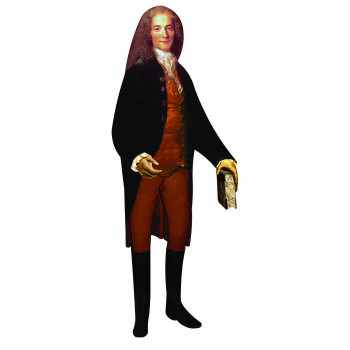JOHN KEATS CARDBOARD CUTOUT
-
$0.00
Available Options
62 x 22 inches. Our cardboard cutout of John Keats. All cardboard cutouts come folded and have an easel attached to the back to be self-standing. Items are printed and produced to order. Printing and processing takes up to 5 business days plus shipping time.
Introduction to John Keats
Celebrate the legacy of one of the greatest Romantic poets with our lifesize cardboard cutout of John Keats. Perfect for literary displays, educational events, or as an inspiring addition to your home or office, this cutout captures the contemplative and passionate presence of John Keats, reflecting his profound impact on English literature and poetry.
Background of John Keats
John Keats was born on October 31, 1795, in London, England. He was the eldest of four children in a modest family. His father, Thomas Keats, died when John was eight, and his mother, Frances, passed away when he was fourteen. Despite these early hardships, Keats developed a love for literature and poetry.
Keats attended Enfield Academy, where he met Charles Cowden Clarke, who introduced him to the world of poetry and classical literature. He later trained as an apothecary-surgeon but eventually abandoned medicine to pursue his passion for writing. In 1816, he published his first poem, "O Solitude," in The Examiner.
Keats's early works, including "Endymion" (1818), received mixed reviews, but he remained determined to improve his craft. He moved to Hampstead in 1817, where he became part of a circle of writers and artists, including Percy Bysshe Shelley and Leigh Hunt. This period was highly productive, resulting in some of his most famous works.
In 1819, Keats wrote a series of odes that are considered masterpieces of English literature. These include "Ode to a Nightingale," "Ode on a Grecian Urn," and "To Autumn." These odes reflect Keats's deep appreciation for beauty, nature, and the transience of life. His poetry is characterized by vivid imagery, emotional intensity, and a profound exploration of the human experience.
Keats's health began to decline in 1820, and he was diagnosed with tuberculosis. In an attempt to improve his condition, he moved to Italy with his friend Joseph Severn. Despite the change of climate, Keats's health continued to deteriorate, and he passed away on February 23, 1821, in Rome at the age of 25.
Though his life was tragically short, Keats's work has left an indelible mark on English literature. His poetry continues to be celebrated for its lyrical beauty and emotional depth.
Cultural Impact of John Keats
John Keats's impact on English literature and the Romantic movement is profound and enduring. Despite his brief career, Keats produced a body of work that is celebrated for its beauty, sensitivity, and philosophical depth. His poetry explores themes of beauty, love, mortality, and the imagination, often reflecting on the fleeting nature of life and the eternal nature of art.
Keats's odes are among the most famous poems in the English language. "Ode to a Nightingale" and "Ode on a Grecian Urn" are particularly renowned for their rich imagery and exploration of the tension between transience and permanence. The famous lines "Beauty is truth, truth beauty" from "Ode on a Grecian Urn" encapsulate Keats's belief in the enduring power of art and beauty.
Keats's concept of "Negative Capability," the ability to embrace uncertainty and ambiguity without the need for logical resolution, has influenced writers and thinkers across generations. This idea reflects his philosophical approach to poetry and life, emphasizing the importance of imagination and intuition.
Although Keats faced harsh criticism during his lifetime, his work gained recognition and admiration posthumously. Today, he is regarded as one of the greatest poets of the English language, with his poems studied and cherished worldwide. His life and work have inspired numerous biographies, films, and adaptations, further cementing his place in literary history.
The Keats-Shelley House in Rome, where Keats spent his final days, is now a museum dedicated to his memory and the Romantic poets. His influence extends beyond literature to art, music, and popular culture, reflecting the timeless appeal of his poetic vision.
This cutout of John Keats celebrates his remarkable contributions and enduring legacy as a master poet. It serves as a tribute to his literary brilliance, his impact on the Romantic movement, and his significant role in shaping the landscape of English poetry.
- Brand: Historical Cutouts
- Product Code:H79057
- Availability:In Stock
LEARN MORE ABOUT OUR AVAILABLE MATERIALS

LIFE SIZE HISTORICAL CUTOUTS
We have been the leading historical based cutout supplier for nearly 10 years. We have worked with many schools, museums, and colleges across the country to provide stunning graphics from hsitory. Historical Cutouts are available in 3 materials and come contour cut with an easel to be self standing. Click below to learn more about each material and our cutout process.
Learn More
LIFE SIZE HISTORICAL WALL DECALS
All of our historical figures are available as a life size wall decals. Vinyl wall decal orders come ready to apply with squeegie and instructions. Having trouble? Check out our how to youtube video. Our graphics are printed on tear resistant PhotoTex Vinyl using our high definition 4 color plus white printing process.
Learn More
HISTORICAL ACRYLIC CUTOUTS
Desktop Legends are a smaller version of our life size cutotus printed on 3/16th" acrylic. All of our historical cutouts are also available as a desktop legend. These acrylic statuettes come in two sizes, 8" and 12". If you would like to learn more please click below.
Learn MoreRELATED PRODUCTS
-
Richard Wagner Cardboard Cutout
65 x 25 inches. Our cardboard cutout of Richard Wagner. All cardboard cutouts come folded and have a..
Giuseppe Verdi Composer Opera Cardboard Cutout Standee Standup
Cardboard cutout of Giuseppe Verdi, widely considered the greatest Italian opera composer of the 19t..
George Eliot Cardboard Cutout
68 x 23 inches. Our cardboard cutout of George Eliot. All cardboard cutouts come folded and have an ..
Felix Mendelssohn Cardboard Cutout
65 x 26 inches. Our cardboard cutout of Felix Mendelssohn. All cardboard cutouts come folded and hav..
George Michael Sidewalk Cardboard Cutout Standee Standup
71x22 inch cardboard cutout of George Michael, one of the most successful musicians of all time. He?..
Grant Wood American Gothic Farmer and Wife Full Body Cardboard Cutout Standee Standup
72x38 inch cardboard cutout. The classic American Gothic by Grant Wood is a famous iconic painting d..
Henry David Thoreau Cardboard Cutout
68 inches. Our cardboard cutout of Henry David Thoreau. All cardboard cutouts come folded and have a..
Lewis Carroll Alice Adventure Wonderland Cardboard Cutout Standee Standup
Cardboard cutout of Lewis Carroll, an English author well known for writing Alice's Adventures in Wo..
Auguste Rodin Cardboard Cutout
70 x 20 inches. Our cardboard cutout of Auguste Rodin. All cardboard cutouts come folded and have an..
Oscar Wilde Cardboard Cutout
75 inches. Our cardboard cutout of Oscar Wilde. All cardboard cutouts come folded and have an easel ..
Van Gogh Mountainous Landscape
Size: 47" x 92"Van Gogh Mountainous Landscape; All cardboard cutouts come folded and have an easel ..
Voltaire Cardboard Cutout
73 inches. Our cardboard cutout of Voltaire. All cardboard cutouts come folded and have an easel att..

